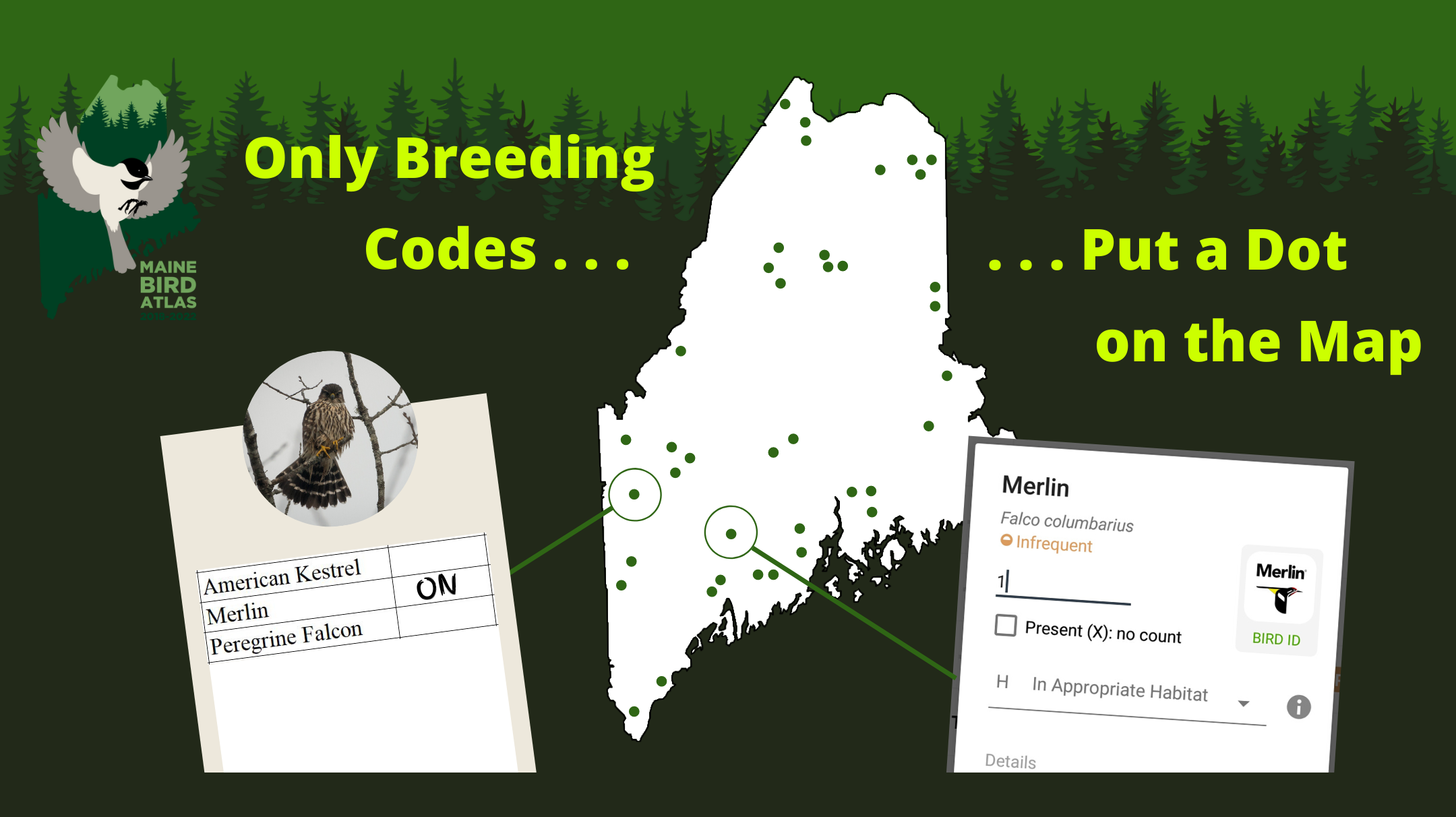
By Maine Bird Atlas Coordinator Glen Mittelhauser
As we move into the heart of the Atlasing season, it is important to remember to associate a breeding code with every bird observation.
Add a Dot to the Map
The goal of the Maine Breeding Bird Atlas is to create a map for each species showing a snapshot of the current breeding population in Maine. Each bird observation you submit to the Atlas with a breeding code adds a dot to the map. Each of these dots come together to build a pattern of breeding distribution across Maine that can be compared to the legacy of breeding bird records from the first Maine Bird Atlas back in 1978-83. Seeing how bird populations and distributions have changed in the 35 years between Atlases will be key to understanding how species may respond to environmental change in the future.
Every Observation Needs a Breeding Code
The important thing to remember is that only observations with breeding codes can add a dot to the map. This policy helps keep the data quality consistent and lets us know where the birds are actually breeding. You should only submit observations without breeding codes if the behavior you observed doesn’t fit any breeding code or if the bird was observed in unsuitable nesting habitat. We know that understanding all the breeding codes can seem a little daunting, but it is an integral part of mapping breeding distribution across the state.
Useful Tools
Below are some useful resources for understanding the breeding codes and how to choose the right one:
Breeding code basics: An overview
One-page summary of all breeding codes
Every Dot Makes a Difference
Most species in Maine are now within their breeding safe dates, meaning that migrants are no longer present in the area so even hearing a singing bird suggests local breeding. As you submit checklists to the Maine Bird Atlas this summer, make sure that all species have a breeding code entered, or if not, that you have a really good reason to think that the species is not breeding in that area.
Through the collective efforts of thousands of volunteers across the state, fine-scale breeding distribution maps for each species in Maine are being constructed. We want to make sure every new observation for an Atlas block becomes a dot on the map!


